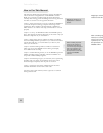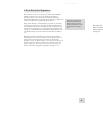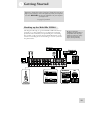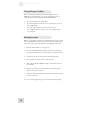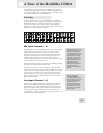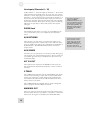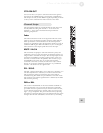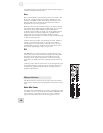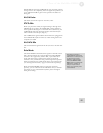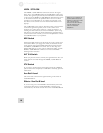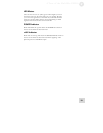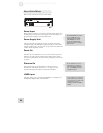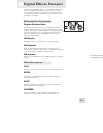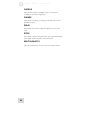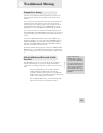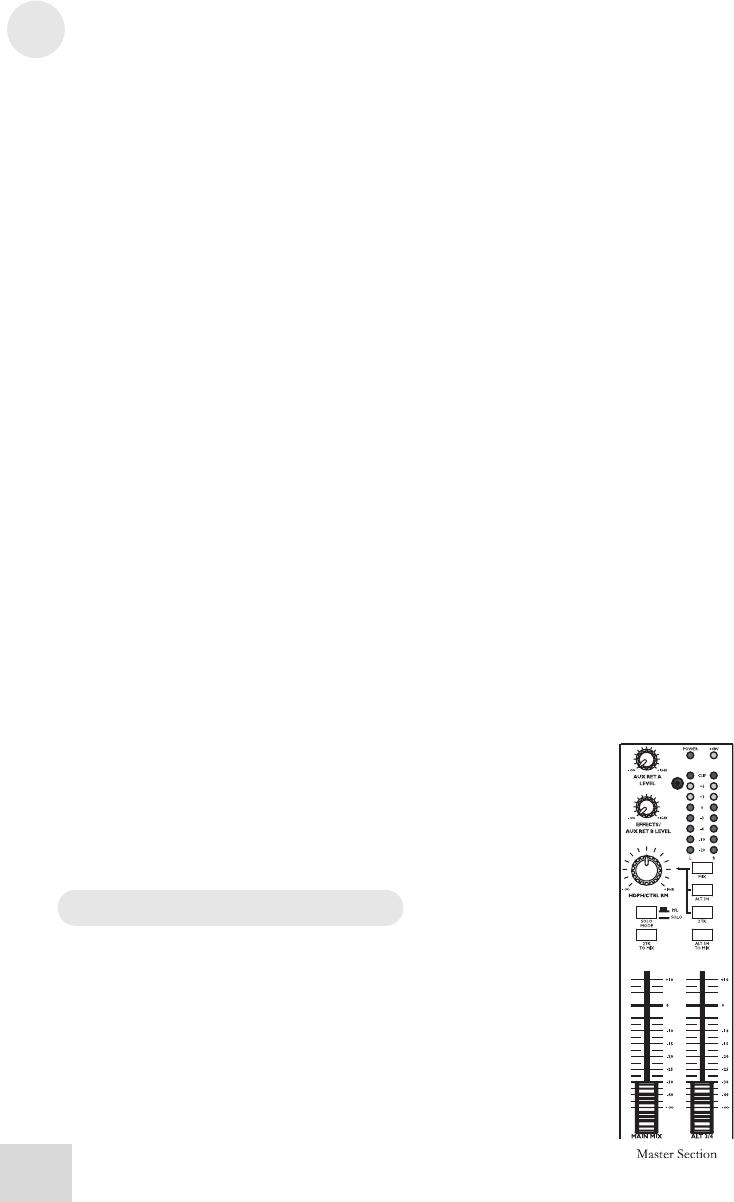
2
A Tour of the MultiMix USB2.0
16
the relative balance of the left and right channel signals being sent
to the left and right main mix buses.
Aux
Here you’ll find knobs that control the levels of aux sends A and
B. AUX A is either pre-fader or post-fader, depending on the
position of the PRE / POST switch. When the switch is in the
raised position, the aux send is pre-fader. When the switch is
depressed, the aux send is post-fader.
What does all this mean? In POST mode the aux send is affected
by the fader, EQ and HPF settings. In PRE mode the aux send is
affected only by the EQ and HPF settings. POST mode is
generally used for sending the signal to an external effects device
(so that the fader controls the signal level), and PRE mode is
usually used for cue sends (for example, sending a signal to
headphones while recording, for which you may not want the fader
to alter the channel’s level).
AUX B is always post-fader, as indicated by the word “POST” to
the right of this knob. Like AUX A, AUX B can be used for
routing signals to external devices. And when you are using the
onboard effects processor, AUX B is used to control the level of
the channel’s signal being routed to the processor.
EQ
The MultiMix gives you three bands of EQ per channel. Using
these knobs, you can tailor the channel’s signal by boosting some
frequencies and cutting others. The LO and HI controls are
shelving controls with fixed frequencies of 80 Hz and 12 kHz
respectively. The MID control has a peaking response fixed at 2.5
kHz.
“Shelving” means that the mixer boosts or cuts all frequencies past
the specified frequency. “Peaking” means that frequencies above
and below the specified frequency fall off, forming a peak in a
graphical representation.
Master Section
The Master Section is the heart of the mixer, where the channel
inputs and aux returns all are mixed together and routed in various
ways.
Main Mix Fader
The signals from all channels and aux sends—excluding those that
are muted—are sent to the main mix. The MAIN MIX fader is the
one you’ll use to control the overall level of those combined
signals. This fader affects the levels of the signals sent to the



